Table of Contents
- FREE 10+ Software Documentation Templates in PDF | MS Word
- 1. Free Software Documentation Template
- 2. Free Software Documentation Methods
- 3. Free Standard Software Documentation
- 4. Free Documentation for Software Systems
- 5. Free Software Development Documentation
- 6. Free Software Architecture Documentation Template
- 7. Free Software Documentation Example
- 8. Free Software Documentation Management Template
- 9. Free Software Documentation in PDF
- 10. Software Development Documentation in DOC
- 11. Software Architecture Documentation Template
- Types of Software Documentation
FREE 10+ Software Documentation Templates in PDF | MS Word
Software documentation refers to written text or diagram accompanying digital software or inserted in the source code. The manual either describes how to use the software or how the software works, and might therefore, mean different things for people in different positions. Documentation is an umbrella term that covers all written records and resources associated with the creation and use of a software product. All software development products, whether developed by a small team or a large company, include some documentation related to this.

FREE 10+ Software Documentation Templates in PDF | MS Word
1. Free Software Documentation Template
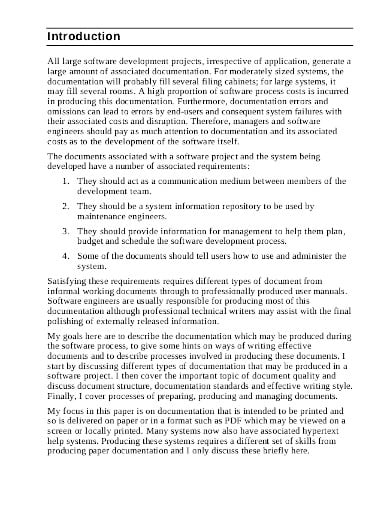 literateprogramming.com
literateprogramming.com2. Free Software Documentation Methods
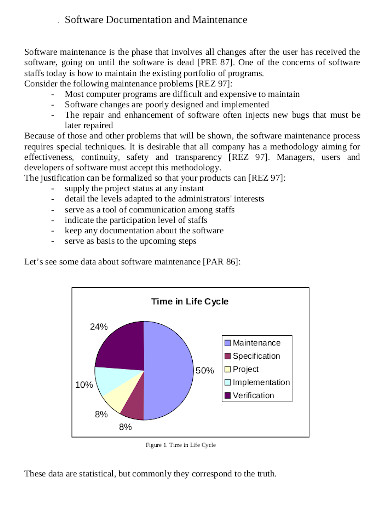 semanticscholar.org
semanticscholar.org3. Free Standard Software Documentation
 ntrs.nasa.gov
ntrs.nasa.gov4. Free Documentation for Software Systems
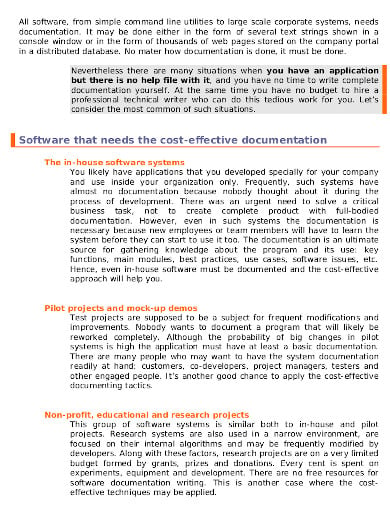 drexplain.com
drexplain.com5. Free Software Development Documentation
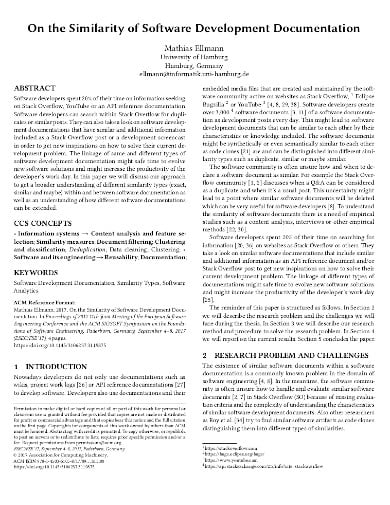 informatik.uni-hamburg.de
informatik.uni-hamburg.de6. Free Software Architecture Documentation Template
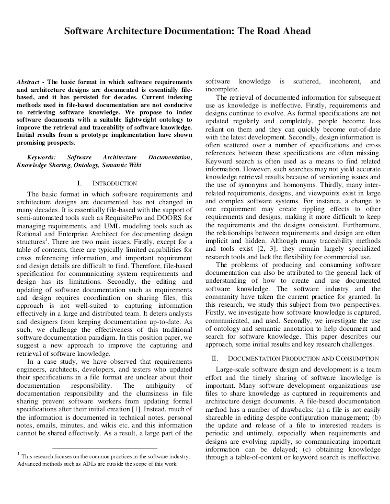 citeseerx.ist.psu.edu
citeseerx.ist.psu.edu7. Free Software Documentation Example
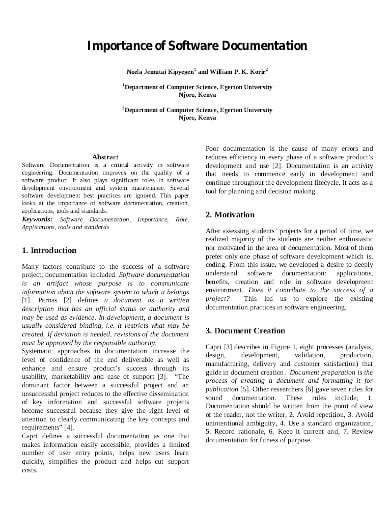 ijcsi.org
ijcsi.org8. Free Software Documentation Management Template
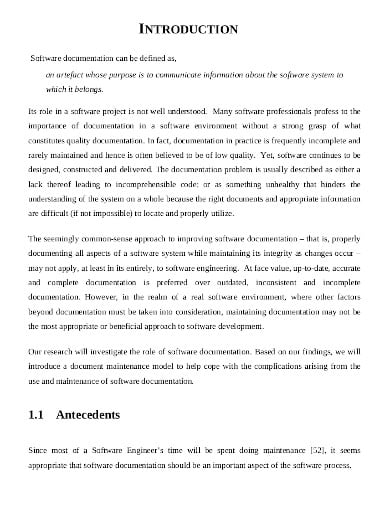 site.uottawa.ca
site.uottawa.ca9. Free Software Documentation in PDF
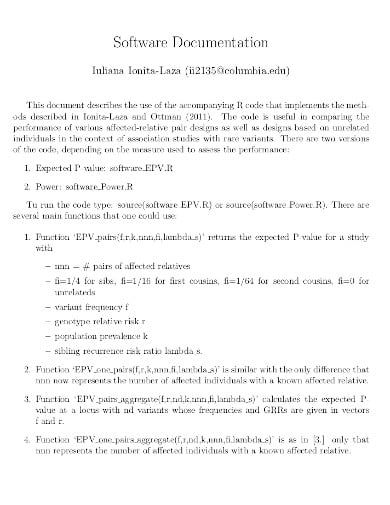 columbia.edu
columbia.edu10. Software Development Documentation in DOC
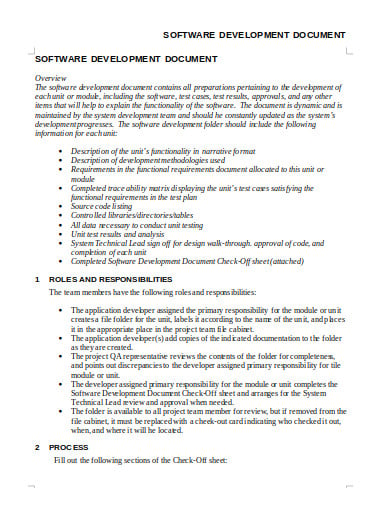 doit.maryland.gov
doit.maryland.gov11. Software Architecture Documentation Template
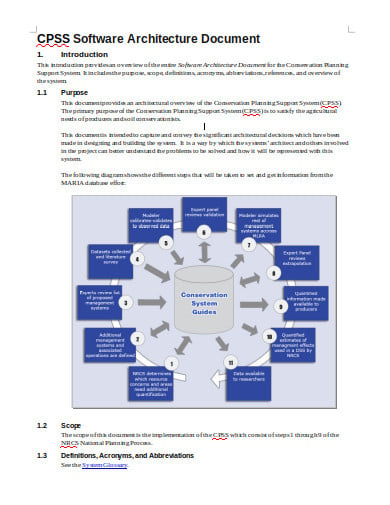 apps.tucson.ars.ag.gov
apps.tucson.ars.ag.govTypes of Software Documentation
Software documentation is a considerable part of software engineering. Documentation types include:
Requirements Documentation
Documentation of Requirements refers to the description of what a specific program does or should do. It is used to explain how the program works or how it is planned to work during development. It is also used as an arrangement, or as a framework for agreement on what the software is going to do. Requirements are manufactured and processed by everyone participating in software development, such as end users, clients software developers, marketing, advertising, software designers, usability engineers, etc.
Requirements come in different forms, note and formalities. Requirements can be objective-like such as in a distributed work environment, similar to design such as builds can be initiated by right-clicking a configuration file and choosing the ‘setup’ function, and anything in between.
They can be defined in simple language as statements, as diagrams drawn, as detailed mathematical equations, and as a mixture of them all. The variety and sophistication of documents on specifications make this an established problem. Specifications may be tacit and difficult to discover. It is hard to know exactly the kind and the measurement of documentation that would be required, and how much could be left to the documentation of architecture and design. Therefore, documentation of the requirements is almost always incomplete or inexistent.
Without proper documentation of requirements, software changes will be more challenging and hence more prone to error (decreased software quality) and time-consuming (costly). Database template-centric frameworks and special-purpose requirements management tools are promoted for handling the increased complexity and evolving nature of requirements documentation (and software documentation in general).
Architecture/Design Documentation
Documentation on architecture (also known as a description of software architecture) is a special type of design document. Architecture documents are, in a sense, the third derivative of the code (the design document is the second derivative, and the code documents are the first). Very little that is unique to the code itself is present in architecture papers. Such documents do not explain how to program a specific routine, or even why that particular routine exists in the manner it does. Instead, it sets out the general terms and conditions that would enable such a routine to exist. A strong document on architecture is short on information but rich in interpretation. It may recommend lower-level design solutions but leave the real exploration trade studies to other papers.
Another form of document of design is the document of comparison or analysis of trade. Often this will take the form of a Whitepaper. This concentrates on one particular aspect of the process and suggests alternative approaches. A good document on the study of trade is heavy on analysis, clearly expresses the concept (without relying heavily on obtuse jargon to dazzle the reader), and most importantly is objective.
The Database Design Document (DDD) is a very important part of the design document in enterprise software development. It includes the elements of philosophical, logical, and physical design. The DDD contains the structured information required by the individuals that communicate with the database. The aim of the preparation is to create a common source for all players within the scene to use. Potential users include database designers, database developers, database administrators, application designers, etc.
Technical Documentation
The code documents associated with the source code (which may include README files and API documentation) must be comprehensive but not so verbose that it becomes overly time-consuming or hard to maintain. Different reference guides for how-to and descriptions are usually found to be unique to the software program or software product being documented by API authors. Programmers, testers, and even end-users can use this documentation. In the areas of power, energy, transportation, networks, aerospace, and several other domains, a lot of high-end applications are seen today.
End-user Documentation
User documents define simply how to use a program layout, unlike code documents. In the context of a software library, the code records and user documents may in some cases be identical and worth combining but this is not always valid for a general application. User documentation usually explains each of the program’s features and makes the developer understand those features. Also, a good user manual can go as far as offering comprehensive support in troubleshooting. It’s very essential not to be inconsistent with user records, and to keep them up to date.
User records need not be structured in any specific way, but having a detailed index is very valuable to them. User documentation can be generated in different online and print formats. There are however three specific ways to arrange user documentation;
- Tutorial: A tutorial approach is perceived to be the most helpful for a new user, where they are driven through each process of performing specific tasks.
- Thematic: A conceptual approach, in which chapters or sections focus on one field of interest, is of more common use to an intermediate person. Many writers prefer to pass on their ideas to promote user needs through a knowledge-based post.
- List/Reference: The final form of organizational template concept is one where orders or tasks are simply described alphabetically or logically ordered, often over cross-referenced indexes. This latter approach is more suitable for advanced users who know exactly what kind of knowledge they are after.
Marketing Documentation
To enable casual observers to spend more time learning about the product, it is necessary to have some promotional materials for many applications. There are three purposes to this type of documentation:
- To stimulate and instill in the potential user a willingness to become more engaged with the product.
- To reassure them of exactly what the company is doing, so their hopes are in accordance with what they will get.






